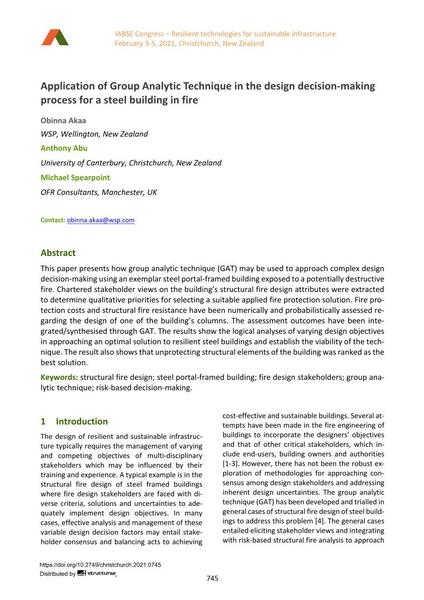Application of Group Analytic Technique in the design decision-making process for a steel building in fire

|
|
|||||||||||
Détails bibliographiques
| Auteur(s): |
Obinna Akaa
(WSP, Wellington, New Zealand)
Anthony Abu (University of Canterbury, Christchurch, New Zealand) Michael Spearpoint (OFR Consultants, Manchester, UK) |
||||
|---|---|---|---|---|---|
| Médium: | papier de conférence | ||||
| Langue(s): | anglais | ||||
| Conférence: | IABSE Congress: Resilient technologies for sustainable infrastructure, Christchurch, New Zealand, 3-5 February 2021 | ||||
| Publié dans: | IABSE Congress Christchurch 2020 | ||||
|
|||||
| Page(s): | 745-752 | ||||
| Nombre total de pages (du PDF): | 8 | ||||
| DOI: | 10.2749/christchurch.2021.0745 | ||||
| Abstrait: |
This paper presents how group analytic technique (GAT) may be used to approach complex design decision-making using an exemplar steel portal-framed building exposed to a potentially destructive fire. Chartered stakeholder views on the building’s structural fire design attributes were extracted to determine qualitative priorities for selecting a suitable applied fire protection solution. Fire pro- tection costs and structural fire resistance have been numerically and probabilistically assessed re- garding the design of one of the building’s columns. The assessment outcomes have been inte- grated/synthesised through GAT. The results show the logical analyses of varying design objectives in approaching an optimal solution to resilient steel buildings and establish the viability of the tech- nique. The result also shows that unprotecting structural elements of the building was ranked as the best solution. |
||||
